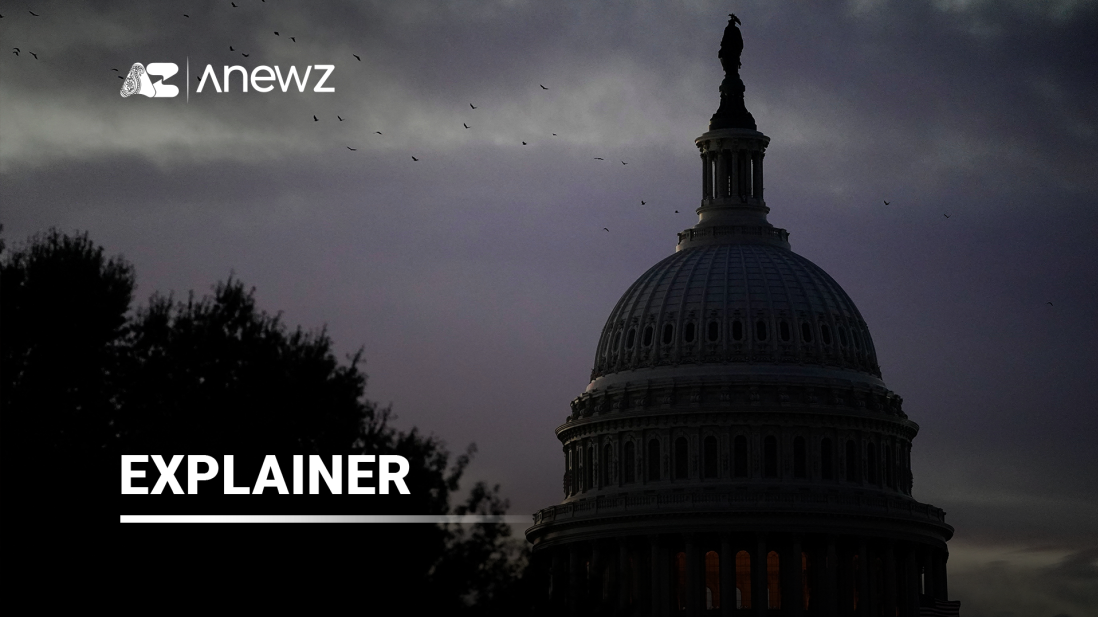Papuashvili slams EU pressure over Georgia's visa waiver scheme
Georgia's Parliament Speaker Shalva Papuashvili has accused Brussels of using visa policy as a political weapon rather than a technical instrument....

The U.S. government has shut down after Congress failed to approve funding. Non-essential services are on hold, thousands of federal workers are left unpaid, and both parties blame each other for the deadlock.
What is a government shutdown?
U.S. Congress is responsible for approving funding for 438 government agencies before 1 October, the start of the new budget year.
When the deadline to agree on the new budget plan is missed, lawmakers often pass short-term bills to keep the government open while continuing work on a full budget.
Democrats and Republicans frequently disagree on how the money should be spent, and talks often go down to the last minute. If no agreement is reached by the deadline, the government shuts down.
What happens now?
If no deal is reached, non-essential government work comes to a halt. Republicans blame the Democrats for blocking a “fair” bill, while Democrats say they were left out of talks and criticise the bill for excluding key healthcare programmes.
These political disputes have intensified under President Donald Trump, who has cut government agencies, reduced staff, and withheld funds approved by Congress.
Who is affected?
The consequences of a complete shutdown affects the entire country. Non-essential federal operations are suspended, and while essential workers remain on the job, they won’t receive pay.
Thousands more, including those in science, administration, and support roles, are on unpaid leave.
This week, more than 150,000 federal workers are also set to leave after accepting a buyout, the largest exit in 80 years.
Key services such as food aid, preschool programmes, student loan processing, food inspections, and national parks are now on hold. Airlines have warned of possible delays due to reduced staffing.
Republicans and Democrats trade blame
Democrats criticise Republicans for not including additional healthcare subsidies in the spending bill, while President Trump blamed the Democrats, warning that the shutdown could lead to what he described as “irreversible” actions.
Though he didn’t elaborate, Trump has recently discussed downsizing the federal workforce, a move that could materialize as the shutdown continues.
Vince Zampella, co-creator of the Call of Duty gaming franchise, has died in a car crash involving a Ferrari crash on Monday in Los Angeles, United States.
Israeli Prime Minister Benjamin Netanyahu said Israel is monitoring recent Iranian military exercises and will raise the issue with U.S. President Donald Trump during his visit to Washington next week.
U.S. President Donald Trump has approved plans to construct a new class of battleships, which he described as larger, faster and significantly more powerful than any previous U.S. warship.
Libya’s chief of staff, Mohammed Ali Ahmed Al-Haddad, has died in a plane crash shortly after departing Türkiye’s capital, Ankara, the prime minister of Libya’s UN-recognised government has said.
It would be smart for Venezuelan President Nicolás Maduro to leave power, and the United States could keep or sell the oil it had seized off the coast of Venezuela in recent weeks, U.S. President Donald Trump said on Monday.
Military representatives from Cambodia and Thailand met in Chanthaburi province on Wednesday ahead of formal ceasefire talks at the 3rd special GBC meeting scheduled for 27th December.
France’s government is moving to pass emergency legislation to keep the state operating into January after lawmakers failed to agree on a 2026 budget, as pressure grows from investors and credit ratings agencies.
Australia’s most populous state has passed sweeping new gun control and anti-terror laws following a mass shooting at Bondi Beach, tightening firearm ownership rules, banning the public display of terrorist symbols and expanding police powers to restrict protests.
Thailand and Cambodia both reported fresh clashes on Wednesday, as the two sides prepared to hold military talks aimed at easing tensions along their shared border.
Start your day informed with AnewZ Morning Brief: here are the top news stories for the 24th of December, covering the latest developments you need to know.
You can download the AnewZ application from Play Store and the App Store.

What is your opinion on this topic?
Leave the first comment